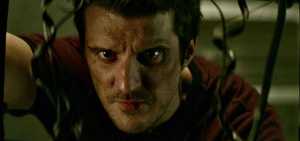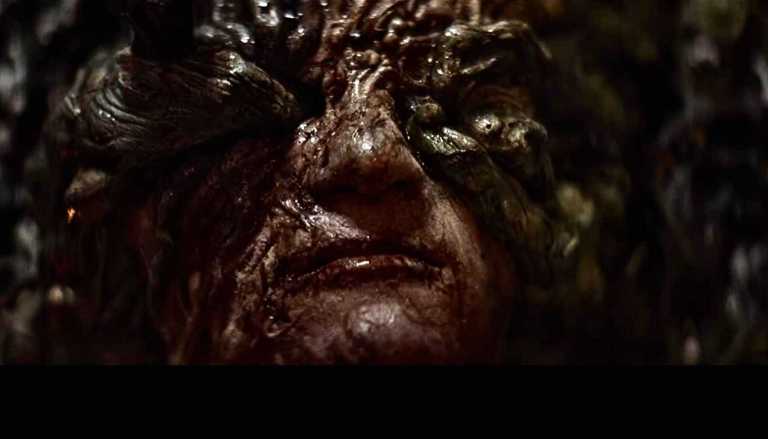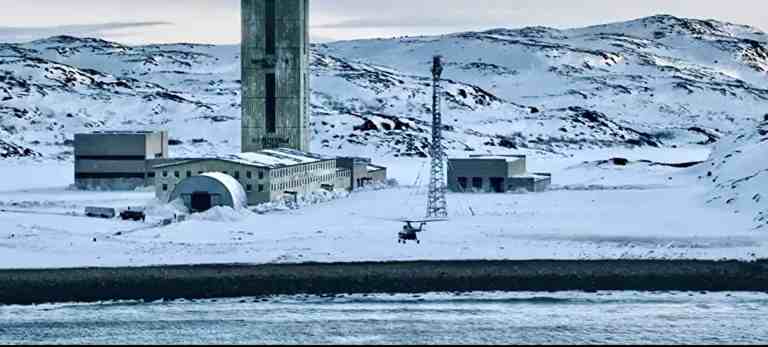★★★ out of ★★★★★
In 1984, an ambitious epidemiologist with flexible ethics is called on by the government of the USSR to investigate — and collect samples from — a top secret research site built inside the deepest hole ever drilled into the Earth.
Directed by Arseny Syuhin

Oh, Science. How we love you and your misguided research ideas that threaten all life on Earth with a slow and painful extinction.
I’ve been keeping an eye out for this movie ever since I heard about it. A horror movie centered around the deepest borehole ever dug into the Earth? Count me in! (And I’ll happily ignore the fact that the real Kola Superdeep Borehole was only about 23cm in diameter.)
The Superdeep starts out in flashback showing us the ambition and cavalier morals of epidemiologist Anna Fedorova [Milena Radulovic; The Balkan Line (2019)]. As part of a team of scientists trying to develop a new vaccine for her Soviet employers, she watches one of her coworkers die after voluntarily using himself as a test subject. Rather than adhering to more conventional testing protocols going forward, Anna accepts an offer of a high-profile agency directorship and continues with the “by any means necessary” approach to speed the project along.

Jumping ahead in time to New Year’s Eve 1984, Anna gets a call from her government counterparts about some kind of biological accident at the underground research station beneath the Kola Superdeep drillsite. She’s instructed to collect samples from the site and, once again, she’s told to get what she’s looking for “by any means necessary”.
The Superdeep marks writer/director Arseny Syuhin‘s first foray into the feature film arena. Veteran translator Samuel Stewart Hunter handled the English language adaptation, but the original work was done by Syuhin. As a directorial debut, this movie sets up Syuhin as someone to keep an eye on for sure. While not everything in the movie worked — with all the metal doors in the facility looking pretty much the same it’s easy to lose track of where the characters are and Anna’s overly dramatic bridge scene dragged on too long — the majority of the film will easily hold your interest.

This isn’t a Michael Bay explosionfest, but if you enjoy solid Russian creature features like Sputnik (2020), you’ll be used to the pacing and overall cinematic flavor of films coming out of that part of the world.
Many of the actors in The Superdeep are still early in their big screen careers. Coming mainly from short film and television work, their small screen experience carries over to feature film work for the most part. Nikita Dyuvbanov as facility engineer Nikolay is very natural in front of the camera and does a good job keeping up with Milena Radulovic as she stoically powers her way through every scene.

No creature feature would be complete without its creature (otherwise it’s just a feature and who wants one of those?) and the one in The Superdeep is a doozy. Without giving too much away I’ll just quote one line from the movie about the monster:
It seems that it’s learned how to melt bodies together for heat and power.
Yikes.
If melted bodies in a snow-and-ice-filled land has you thinking of The Thing (1982), you’re not alone. The film definitely has a similar vibe to it; remote research station, frozen wasteland, critter trying to escape. All that’s missing is a Trust No One mantra and Kurt Russell in a big floppy hat.

If you’re going to pay homage to another movie, though, mimicking elements of a John Carpenter classic is the way to go. The Superdeep is yet another fun entry in the recent body of Russian horror. If you enjoy foreign monster movies, give this one a look-see.
The Superdeep is available for streaming on Shudder, Amazon Prime, and AMC+.
Review by Robert Zilbauer.


